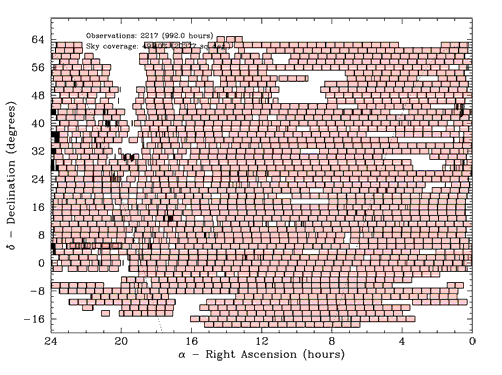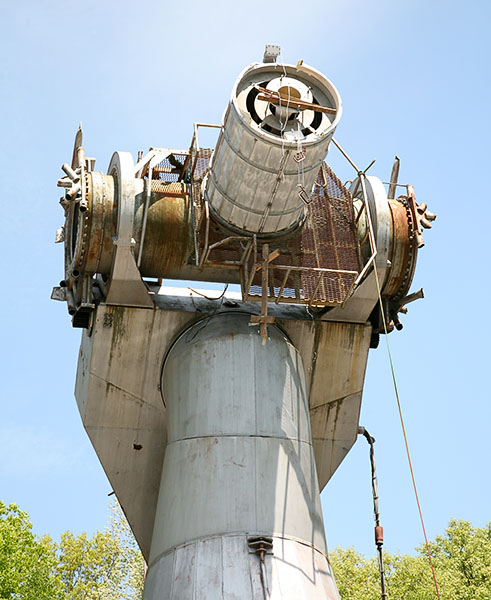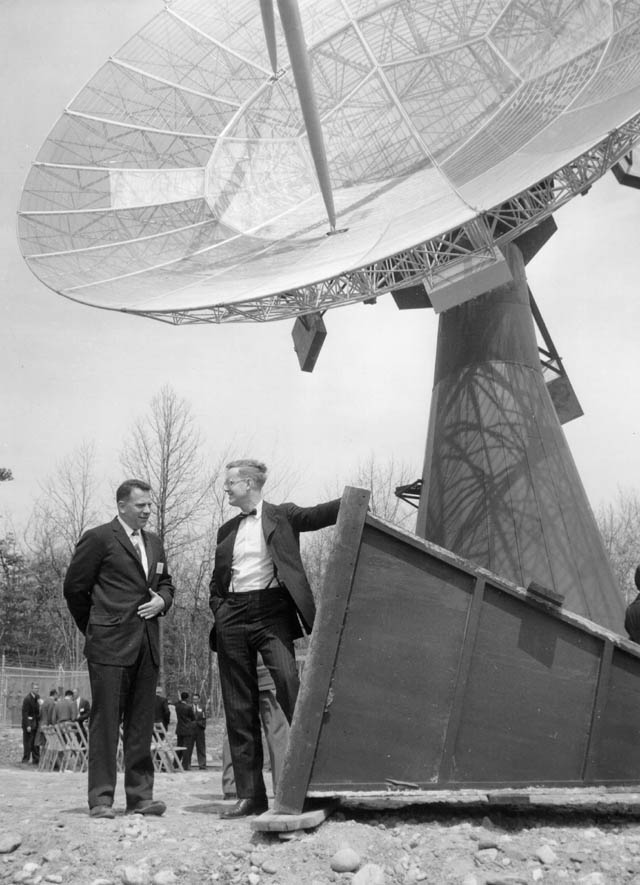50% Coverage of the Northern Sky!
Since the fall of '06, we've been observing every clear night.
In early March '07 we passed 50% coverage of the Northern sky!
Below is a map of the sky with our transit drift observations shown
as red rectangles. The brighter spots have been observed twice.

The image above represent 2217 observations spanning 992 hours
(conducted over 125 nights). During those observations the instrument
"triggered" 30 times (in 7 episodes), but with at most one genuine "event."
We define a trigger to be any time the instrument detects coincident
electrical pulses during an observation. Not all triggers are genuine
flashes. The subset of triggers that pass all of our tests of what
a real signal should look like are called events. So far we have seen
perhaps one of these during observations; the rest occurred in bursts,
on unrelated pixels. An instrumental noise source (such as corona
breakdown) seems a much more likely explanation for two or more signals
simultaneously received from widely separated parts of the sky.
Gearbox Failure
On the night of March 29, 2007, as we were beginning automatic observing
mode, the roof got stuck at 7% open. Turns out the motor drive popped
its breaker. Joe Zajac tried resetting, whereupon the current spiked
to >10 amps, and repeated its performance. With some considerable effort
Joe managed to crank the roof closed, manually (it takes 1/2 horsepower
at normal speed). The culprit was the motor/gearbox, where failed
bearings locked up the works; without "back EMF" the motor draws huge
current (motor people call this "locked rotor"). Here's a shot looking
into the gearbox, where you can see the worm gear running sideways!

What To Do?
Al Sliski took one look at the gearbox and said "it's too darn small."
In fact, it's rated at about 0.4 hp; also, it was used (very used!) when
we got it, from Al's junkbox. So, we ordered a heftier unit, from the
home team at Boston Gear, and a shiny new (well, eBay "NIB") motor. We
filled the gearbox with fancy Klubersynth oil (30 bucks for a quart! -- each
molecule is assembled, lovingly, by obsessive German chemists). Here's
a shot showing the old perched atop the new. This puppy should last forever...

Speaking of Gearboxes...
May, 2007: Harvard's 84-foot radiotelescope (originally 60', back in 1956
when it first went up) finally bit the dust (or met the furnace, or whatever).
Here's a shot showing the remains of the fiberglass radome, sticking out from
the equatorial mount.

Forty Years Earlier
Here is a lovely historical photo showing the scene 41 years earlier. That's
Ed Purcell with his former graduate student Harold ("Doc") Ewen, with the
L-band horn with which they discovered the 21-cm (1420 MHz) radiation from
galactic neutral hydrogen; that discovery, made with a $500 grant from the
Rumford Fund of the American Academy of Arts and Sciences, launched spectral-
line radioastronomy. Quite a bargain!





